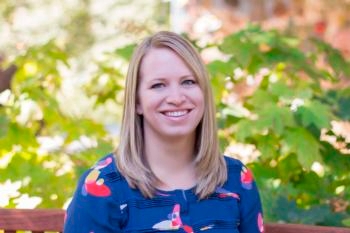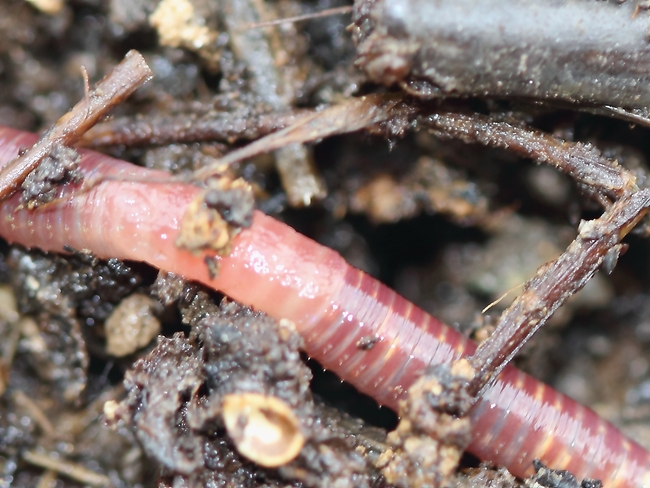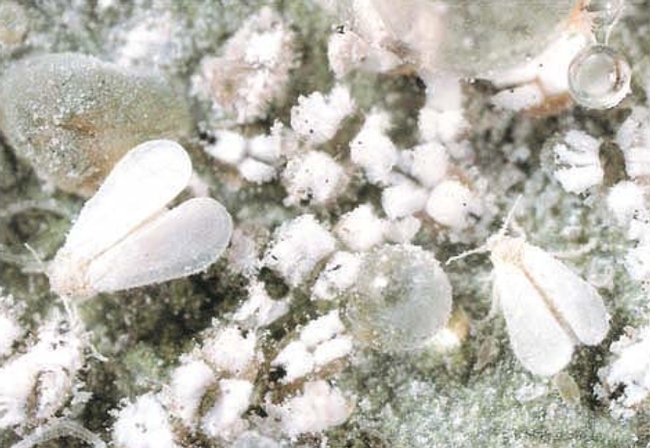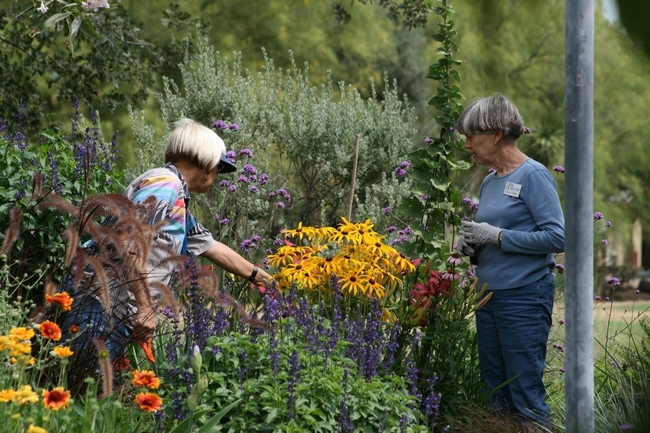
Posts Tagged: Master Gardener
Garden therapy during the coronavirus crisis

"Start modestly and in a way that you can manage it,” Gable said. “If you've never done this before, don't transform a quarter acre.”
She recommends beginning by assessing space you have available for gardening - whether in the backyard, front yard or the corner of a balcony.
“Get to know the space, and watch to see how light moves around," Gabe said.
Most plants need about six hours of direct sunlight a day. Then figure out what kind of soil you're dealing with: Is it dry or rocky? Does it have the consistency of clay? Is there good drainage or does the water often pool? None of these results are “bad” or should dissuade you from planting there, but understanding what you're starting with will inform what you do next.
Gable recommends planting fruits and vegetables that you love to eat.
“For a starting gardener, depending on what your family is most interested in, I always recommend the standards: tomatoes, zucchinis, peppers, carrots, radishes, Swiss chard, eggplants. Those are fun and easy," she said.
If you have kids, Gable recommends including some plants that have a shorter yield time, so they can see the results faster. “Radishes are a really nice place to start,” she said. “They mature really quickly, and it's a fun way for kids to see the fruits of their labor quickly so then they're invested in the plants that take a little longer, like tomatoes.”
The UC Master Gardener Program trains volunteers to extend research-based gardening information to the public. Gable recommends looking up your local UC Master Gardener Program to get accurate information based on local conditions.
Turn food and garden waste into rich fertilizer with worms
UC Master Gardeners in Stanislaus County presented an all-natural, sustainable solution to disposing garden and food waste during a session for the community on worm composting, reported John Holland in the Modesto Bee.
All it takes is an 18-inch deep bin, equipped for drainage, and a supply of red worms. Provide the worms a substrate that contains a mix of high carbon materials - like shredded paper, dry leaves or sawdust - and kitchen scraps - such as fruit and vegetable cores and peels, leftover grains and coffee grounds. A few months later, the worms will have transformed the contents into a rich organic fertilizer ready to be applied to garden plants.
"It's a great fertilizer," said UC Master Gardener Dennis Lee. "It's very inexpensive for you to produce. You can do it indoors. There's very little odor - actually, no odor.
Learn more:
Orange County UC Master Gardeners created a video series on worm composting
Vermicomposting - Composting with Worms, from San Joaquin County Master Gardeners
Whiteflies are swarming like snow flurries at the Central Coast
A common springtime nuisance, whitefly populations have escalated this year in California Central Coast areas, reported Megan Healy on KSBY Channel 6 in San Luis Obispo.
People are mistaking them for clouds of pollen or ash; some leaves look like they're coated with a thin layer of new-fallen snow.
The reporter spoke to Cathryn Howarth, a UC Cooperative Extension Master Gardener in San Luis Obispo County. She said the office has received dozens of calls from residents wondering why the whiteflies are so abundant this year.
"It's probably a reflection of the increasing temperatures coming on top of all that nice water we have had, so we have had a flush of vegetation and the flies that came from eggs originally have just all hopped out," Howarth said.
The story referenced the UC Agriculture and Natural Resources Integrated Pest Management Program, which has produced a Pest Note on whiteflies that says signs of an infestation include:
- Tiny nymphs on the underside of leaves
- Sticky honeydew on leaves or a covering of black sooty mold
- Yellowing, silvering or drying of leaves that have whitefly nymphs on them
Howarth said home gardeners can spray the whiteflies with a stream of water from a hose or spray them with insecticidal soap to reduce the population. The pest has abundant natural enemies in the yard, including ladybugs, spiders, lacewings and hummingbirds. However, whitefly outbreaks can occur when the natural biological control is disrupted.
For more information on whitefly management, read the UC IPM Pest Note on whiteflies.
UC Master Gardener program arrives in Stanislaus County
UC Cooperative Extension in Stanislaus County is launching its first UC Master Gardener program to extend research-based gardening assistance and information to county residents, reported John Holland in the Modesto Bee.
“Our goal is to encourage healthy environments (and improve the appearance of our community) with sustainable landscaping and gardening, green waste reduction and water conservation,” said Roger Duncan, UCCE county director.
Gardening enthusiasts may apply for the first round of training until Sept. 28. Weekly training sessions will be from Jan. 30 to June 5, 2019. Tuition is $180. After certification, Master Gardeners volunteer 50 hours of service in the first 12 months, then 25 hours per year after that.
The training will be held in Stockton this year, along with UC Cooperative Extension in San Joaquin County.
"They are joining our regular training to help get their program up and running," said Marcy Sousa, the UC Master Gardener program coordinator in San Joaquin County.
The volunteers do not need to start out with detailed knowledge of gardening, said Kari Arnold, the UCCE farm advisor overseeing the program. That will come from experts tapping into university research on the various topics.
For more information and to apply, visit the Stanislaus County Master Gardeners website.
UC Master Gardener program, launched in California in 1981, now serves more than 50 California counties with 6,116 actives volunteers.
UC Master Gardeners in LA are volunteers who garden

UC Master Gardeners volunteer under the auspices of UC Agriculture and Natural Resources (UC ANR). UC ANR Cooperative Extension offices in 50 California counties operate the volunteer gardening education program.
Savio has served as the UC Master Gardener coordinator in LA County since 1994. The first few years of MG classes, the students were often retirees or garden club members, many of whom were uninterested in volunteering in areas where they was the greatest need. In 2000, Savio visited community garden to search for volunteers.
"That's what started this synergy between master gardeners and community gardens," she says. "We in L.A. are completely different from other [master gardener programs] statewide in that we allow people to develop their own projects. We have had the special distinction in specializing in edibles, school gardens and low-income folks. As much as we're known for doing this wonderful stuff, it's not within the purview of other master gardener programs."
The program will continue after Savio retires at the end of June with Rachel Surls, the UC ANR Cooperative Extension urban agriculture advisor, at the helm. In retirement, Savio be writing a blog at http://gardeninginLA.net with garden resources for the greater Los Angeles County area and beyond.


